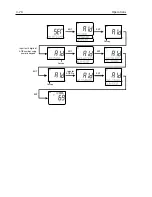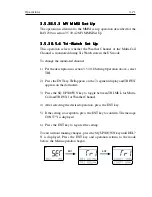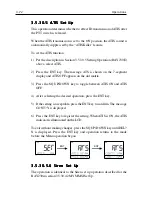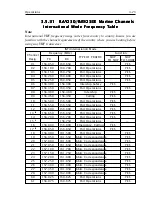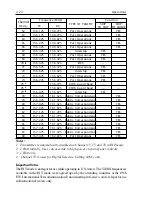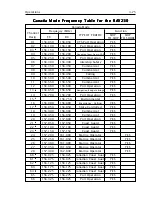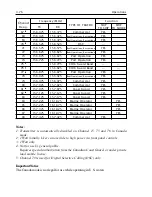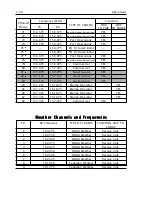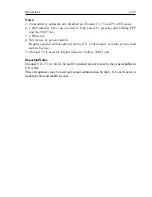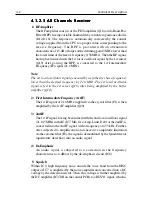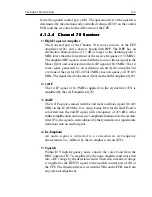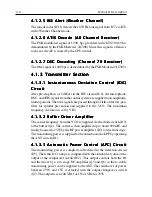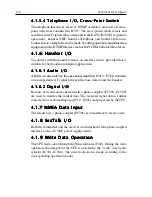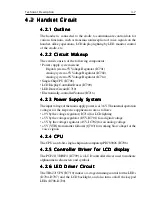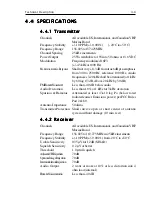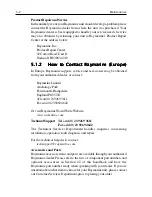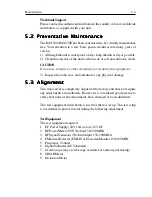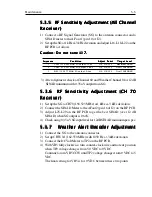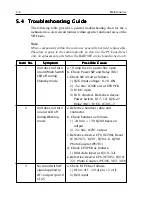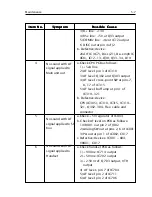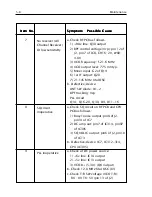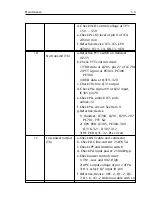
4-4
Technical Description
4.1.2.5 WX Alert (Weather Channel)
4.1.2.5 WX Alert (Weather Channel)
4.1.2.5 WX Alert (Weather Channel)
4.1.2.5 WX Alert (Weather Channel)
4.1.2.5 WX Alert (Weather Channel)
The tone decoder (IC11) detects the 1050 Hz tone signal from IC7 via IC8,
in the Weather Channel mode.
4.1.2.6 ATIS Decode (All Channel Receiver)
4.1.2.6 ATIS Decode (All Channel Receiver)
4.1.2.6 ATIS Decode (All Channel Receiver)
4.1.2.6 ATIS Decode (All Channel Receiver)
4.1.2.6 ATIS Decode (All Channel Receiver)
The FSK modulated signal of 1200 bps provided in the ETS300-698 is
demodulated by the FSK Modem-1 (IC308). Since this signal is offensive
to the ear, the AF is muted by the CPU control.
4.1.2.7 DSC Decoding (Channel 70 Receiver)
4.1.2.7 DSC Decoding (Channel 70 Receiver)
4.1.2.7 DSC Decoding (Channel 70 Receiver)
4.1.2.7 DSC Decoding (Channel 70 Receiver)
4.1.2.7 DSC Decoding (Channel 70 Receiver)
The DSC signal of 1200 bps is demodulated by the FSK Modem-2 (IC309).
4.1.3 Transmitter Section
4.1.3 Transmitter Section
4.1.3 Transmitter Section
4.1.3 Transmitter Section
4.1.3 Transmitter Section
4.1.3.1 Instantaneous Deviation Control (IDC)
4.1.3.1 Instantaneous Deviation Control (IDC)
4.1.3.1 Instantaneous Deviation Control (IDC)
4.1.3.1 Instantaneous Deviation Control (IDC)
4.1.3.1 Instantaneous Deviation Control (IDC)
Circuit
Circuit
Circuit
Circuit
Circuit
After pre-emphasis of 6 dB/oct in the IDC circuit (IC6), the microphone,
DSC, and ATIS signals from the control system are supplied to an amplitude-
limiting circuit. Then the signals are passed through a fifth-order low-pass
filter for splatter prevention and supplied to the VCO. The maximum
frequency deviation is set by VR3.
4.1.3.2 Buffer Driver Amplifier
4.1.3.2 Buffer Driver Amplifier
4.1.3.2 Buffer Driver Amplifier
4.1.3.2 Buffer Driver Amplifier
4.1.3.2 Buffer Driver Amplifier
The carrier frequency from the VCO is supplied via the diode switch (D7)
to the buffer (Q2). The carrier is then amplified up to about 200mW, and
finally boosted to 25W by the RF power amplifier (IC1) at the final stage.
The transmitting power is supplied to the antenna via the LPF by operating
the ANT switch (D1).
4.1.3.3 Automatic Power Control (APC) Circuit
4.1.3.3 Automatic Power Control (APC) Circuit
4.1.3.3 Automatic Power Control (APC) Circuit
4.1.3.3 Automatic Power Control (APC) Circuit
4.1.3.3 Automatic Power Control (APC) Circuit
The transmitting power is sampled and rectified in the detection circuit
(D5). Then, this DC voltage is compared with the standard set value of the
output at the comparator circuit (IC2). This output controls both the PA
and the driver by a two-stage DC amplifier (Q5 and Q6) so that a stable
transmitting power can be supplied to the ANT. The switchover of power
between 25 W and 1 W is effected with the output changeover switch
(Q7). The output is set with VR1 for 1W or VR2 for 25W.
Summary of Contents for RAY230E
Page 1: ...RAY230 RAY230E Fixed Mount VHF Radio Owner s Handbook Document number R49006_1 Date May 2001...
Page 2: ......
Page 7: ...vii Declaration of Conformity goes here...
Page 102: ...3 80 Operations...
Page 138: ...6 16 Parts List and Drawings...
Page 150: ...7 12 Appendix...

